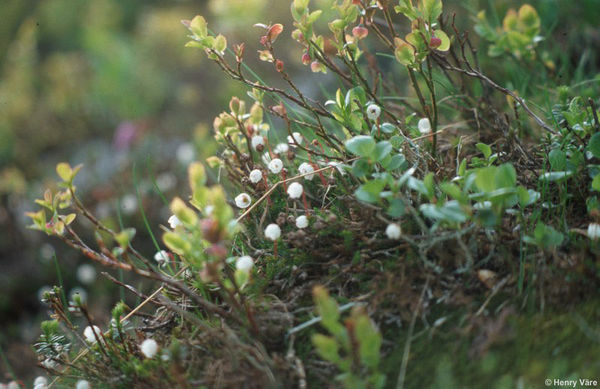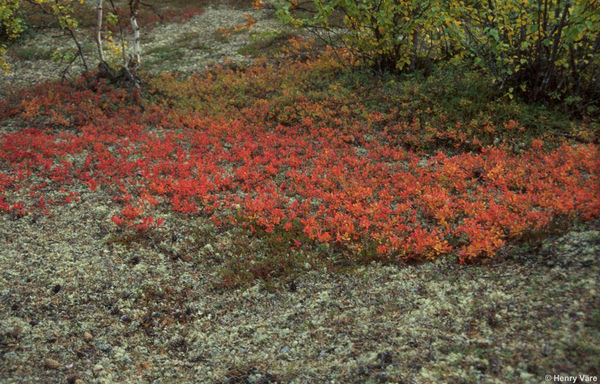Marjat
Marjat
Berries
Berries are many-seeded fleshy indehiscent fruits. The epicarp usually forms a tough outer skin, generally coloured to attract animals, which are responsible for dispersal. The mesocarp is massive and fleshy, and in some species it is valued by man. Berries are also very important for several other animal species in the northern latitudes. The average yield is highly variable depending on the growing season. Frost during the period of flowering is most detrimental, and rainy seasons also lower the yield. Berries are highly appreciated for the production of juices, liqueurs, wines and jellies. Frozen berries are important market products.
There are a number of economically important plant species producing edible berries in northern Fennoskandia. Cloudberry (Rubus chamaemorus) is perhaps the best known outside the Nordic Countries. The average annual yield of its golden yellow berries is 20-30 kg per hectare, but may even reach 500 kg/ha. In Finland the total annual yield is estimated to be 25 million kilograms. It is most productive in northern Finland, and economically the most important berry-producing species there. Cloudberry is a dioecious species, and male individuals dominate the stands, so most individuals do not produce berries. The berries ripen generally in late July and August. Typical growing sites are spruce and pine mires. Cloudberry is very rich in vitamin C, with a concentration of it that is about three times as high as in orange.
Together with cloudberry, bilberry (Vaccinium myrtillus) and cowberry (V. vitis-idaea) are the three most economically important berry producing native non-cultivated species in northern Fennoscandia. The berries are blue and red, respectively. The annual average yield of bilberries in Finland is 5-30 kg/ha (maximum 500 kg/ha) and the estimated total yield 150-200 million kilograms. The bilberry favour mesotrophic pine and especially spruce forests, while the cowberry thrives best in oligotrophic pine forests rich in lichens. The average yield of cowberries is 8-30 kg/ha (maximum 330 kg/ha) and average annual yield in Finland 200 million kilograms.
The bog bilberry (V. uliginosum) resembles the bilberry in aspect, but the berries are less tasty. However, it is esteemed when collected together with bilberry. Generally, the bob bilberry favours moister sites than bilberry, but on the mountains and fells they grow together, although the berry yield there is lower. The vitamin C concentration is higher in Bog Bilberry than in Bilberry.
Cranberry (V. oxycoccos) and small cranberry (V. microcarpon) are also very productive, with an average annual yield of 20-40 kg/ha, and on the most luxuriant sites 400kg/ha in a good season. The total annual yield ranges between 5 to 40 million kilograms. The berries ripen late in the season and may be picked until the snow covers the ground, and indeed also in the spring, after the snow melts. Cranberries grow on pine mires and on fens rich in sphagna.
Crowberry (Empetrum nigrum) is perhaps the most productive berry-producing species in the north. It was traditionally used by the Saami people, but today it is greatly underappreciated. It may be eaten mixed with bilberries for example, and it is also used as a dye. Crowberries are excellent for making wine. They grow on relatively dry pine forests, on pine mires and mountain heaths. The annual average yield is 20-40 million kilograms.
Other usually locally or sometimes commercially used species are rowan (Sorbus aucuparia) and common juniper (Juniperus communis). The average annual yield for an individual rowan tree is 20 kg, and for common juniper 0.25 kg. Both species are locally common in the forests of the northern boreal zone flora. The main products of rowan berries are jellies, sweet wines, and common juniper is used to flavour spirits and as a garnish for wild meat. Redcurrants (Ribes spicatum) and Blackcurrants (R. nigrum) are also of local importance.

